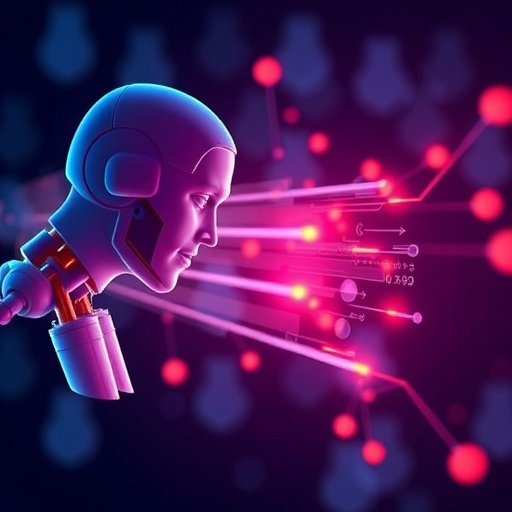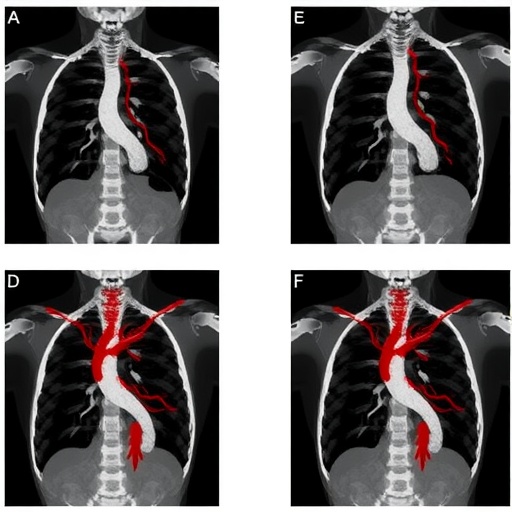In the rapidly evolving landscape of oncology, the integration of artificial intelligence (AI) with human reasoning is stirring up a multitude of discussions concerning its practical application in real-world scenarios. This innovative intersection represents a potential paradigm shift in how healthcare professionals diagnose, treat, and manage cancer. The forthcoming article by Ardila et al. not only illuminates the promising facets of this technology but also raises pivotal questions that could shape the future of patient care in oncology.
As the capabilities of AI grow exponentially, the healthcare sector is observing a transition where machine learning algorithms and sophisticated data analytics begin to play pivotal roles in clinical decision-making. The implications for oncology are particularly significant. With the ability to process vast amounts of data at remarkable speeds, AI can identify patterns that may elude even the most seasoned oncologists, holding the potential to enhance diagnostic accuracy and personalize treatment pathways. However, despite the potential benefits, several challenges and ethical considerations arise in their implementation.
One of the foremost concerns is the need for transparency in AI operations, often referred to as the “black box” problem. Healthcare providers and patients alike require insights into how AI systems reach their conclusions. When an AI-driven tool makes a recommendation, it is crucial for clinicians to understand the underlying logic, ensuring that human reasoning remains integral to the decision-making process. Without transparency, confidence in AI applications could wane, which could ultimately undermine the clinician-patient relationship.
Moreover, while AI software has demonstrated efficacy in recognizing tumors from medical imaging, these algorithms must be rigorously validated across diverse patient populations and clinical settings. Ignoring these disparities could lead to skewed results and inequities in treatment outcomes. Therefore, the real-world implementation of AI systems in oncology must account for factors such as socioeconomic status, geographic location, and existing healthcare disparities to ensure equitable access and treatment efficacy for all patients.
Another aspect that demands attention is the need for comprehensive training for healthcare professionals. Although AI technologies can streamline workflows and enhance decision-making processes, practitioners must still possess the expertise and intuition requisite for patient interactions. Education and training programs that integrate AI usage into medical curricula can equip future oncologists with the skills necessary to interpret AI outputs effectively and employ them to complement their clinical judgment rather than replace it.
Patient-centric approaches are at the core of modern oncology, and any integration of AI must prioritize the needs and preferences of the patient. Patient involvement in decision-making and treatment plans ensures that healthcare is tailored to individual circumstances, fostering adherence and satisfaction. Thus, communicating AI-driven recommendations in an understandable and relatable manner remains essential; oncologists need to bridge the gap between complex AI insights and patient comprehensibility.
As researchers explore the ethical implications surrounding AI in oncology, they must also consider how data privacy concerns intersect with technological advancement. The use of patient data to train AI models begs questions regarding consent, confidentiality, and the ethical management of health information. Striking an appropriate balance between utilizing data to enhance AI capabilities and safeguarding personal privacy will be critical moving forward.
Collaboration among stakeholders, including healthcare institutions, technology developers, and policymakers, is vital to address the multifaceted challenges presented by AI in oncology. Collaborative efforts could lead to the establishment of standardized protocols and guidelines that will govern the use of AI in clinical settings, ensuring that its integration fosters patient safety and optimistic outcomes.
As the discourse around artificial intelligence in healthcare intensifies, standout studies like that of Ardila et al. represent important contributions to the dialogue. They emphasize the need for ongoing research aimed at assessing the implications of AI as it intersects with human reasoning, particularly in high-stakes fields like oncology. As these conversations unfold, a concerted effort will be required to cultivate an ecosystem in which AI and human expertise coexist harmoniously in service of patient health.
Ultimately, the journey to fully realize the potential of AI in oncology will be a collaborative endeavor. Engaging patients, clinicians, researchers, and developers will be paramount in navigating the ethical, practical, and theoretical dimensions that accompany this technological transformation. As the healthcare community embraces AI as a tool for progress, the emphasis on maintaining compassionate, patient-centered care must remain unwavering.
In conclusion, the research of Ardila and colleagues magnifies the imperative to ponder both the opportunities and challenges presented by AI integration in oncology. As this wave of innovation surges forward, it is the collective responsibility of every stakeholder to leverage AI not just as a means of enhancing efficiency, but also as a catalyst for deepening the patient experience within the intricacies of cancer treatment. Future discussions, investigations, and applications will undoubtedly continue to shape the trajectory of oncology, fostering a multidisciplinary approach that centers on patients while harnessing the power of artificial intelligence.
Subject of Research: Integration of artificial intelligence with human reasoning in oncology.
Article Title: Integrating artificial intelligence with human reasoning in oncology: questions on real-world implementation and patient-centric evidence.
Article References:
Ardila, C.M., Vivares-Builes, A.M. & Pineda-Vélez, E. Integrating artificial intelligence with human reasoning in oncology: questions on real-world implementation and patient-centric evidence.
Military Med Res 12, 75 (2025). https://doi.org/10.1186/s40779-025-00663-7
Image Credits: AI Generated
DOI: https://doi.org/10.1186/s40779-025-00663-7
Keywords: AI, oncology, human reasoning, patient-centric evidence, ethical implications.
Tags: AI in Oncologychallenges of AI implementationdata analytics in oncologydiagnostic accuracy with AIethical considerations in AIfuture of cancer diagnosishuman reasoning in cancer treatmentmachine learning in healthcarepatient care and technologypersonalized cancer therapyreal-world applications of AItransparency in AI systems





